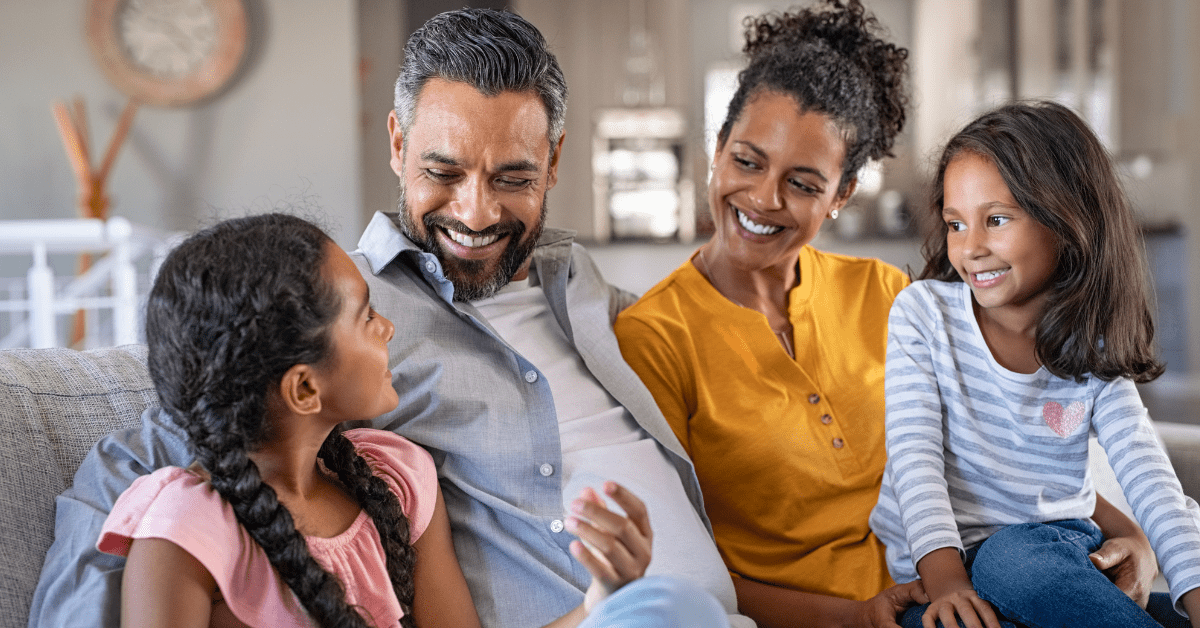Written by Abigail Graham, LMSW
Gratitude is the state of being thankful or appreciative of the positive aspects of life. It’s like having a heart full of warm fuzzies when something nice happens or when someone is kind to you. Gratitude is saying “thank you” and appreciating the little things, whether it’s a friend’s smile, a delicious meal, or a cozy bedtime story.
Gratitude also has a direct impact on the mental health of kids and teens. In this article, we’ll explain why fostering an “attitude of gratitude” is a great way to invest in their mental health, and we’ll share a simple gratitude activity you can try.
4 Benefits of Gratitude for Children and Teens
1. Gratitude Enhances Emotional Resilience
When faced with challenges, children and teens with a grateful mindset are better equipped to navigate difficult situations, finding strength in acknowledging the positive aspects of their lives. Focusing on what we’re grateful for creates a more positive outlook on life overall, which in turn creates greater emotional resilience.
2. Gratitude Promotes Positive Social Connections
Teaching children to express gratitude helps them appreciate the importance of their personal relationships. Whether it’s saying “thank you” for a kind gesture or acknowledging the support of friends and family, gratitude fosters positive social connections that contribute to a strong support system.
3. Gratitude Decreases Stress and Anxiety
Gratitude acts as a natural stress-buster. When individuals take time to reflect on the positive aspects of their lives, it creates a sense of calm and reduces the impact of stressors.
4. Gratitude Encourages Mindfulness
Practicing gratitude is an essential activity for mindfulness. When you reflect on what you’re thankful for, you’re able to be more fully present and aware of the small joys in life.
This level of mindfulness not only enhances their ability to savor positive experiences but also serves as a valuable coping mechanism during challenging times.
One Simple Gratitude Activity to Try Today
Creating a “Gratitude Jar” as a family is a great way to have an open discussion about the concept of gratitude and how it involves recognizing and appreciating the positive aspects of life.
All you’ll need is a jar or container, pieces of paper, and pens or markers.
Ask each family member to write or draw something they are thankful for on each piece of paper. Throughout the week, month, or year, encourage everyone to write down things they are grateful for on their notes and place them in the gratitude jar. Then, set aside a regular time, such as dinner or before bedtime, to gather as a family and read a few gratitude notes from the jar. This allows the family to share the positive experiences and feelings associated with each expression of gratitude.
This activity not only helps instill a sense of gratitude in children, but also serves as a visual representation of the many things the family is thankful for. Over time, your kids will see the jar fill up with a heartwarming collection of positive memories and reflections.
To learn more about how Backpack is bringing comprehensive, accessible, and inclusive mental healthcare to families, visit this page.
References:
- https://adaa.org/learn-from-us/from-the-experts/blog-posts/consumer/mental-health-benefits-gratitude-kids-teens
- https://www.mentalhealthfirstaid.org/2022/11/practicing-gratitude/
- https://www.psychologytoday.com/us/blog/contemporary-psychoanalysis-in-action/202005/how-teach-children-practice-gratitude

